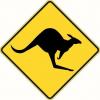
Originally Posted by
Derek Cohen

In the shop, it is easier to use Metric to measure, but it is easier to use Imperial to visualise.
I don't disagree, but then again, I grew up only knowing Imperial so it's quite natural to visualize things easier that way. Had we grown up in metric only...that would be just as natural, IMHO. I'm getting there in a reasonable way at this point with the metric, however, simply because I'm working with it and that's how my mind adapts. In generally, I can switch between them pretty easy when it's necessary. Most of my gear has combo metric/Imperial scales (SMC/Minimax) and all of my Festool is marked Metric. (all acquired before they started to switch scales for NA sales) The CNC is setup for "inches" post-processor and obviously most of my tooling is in Imperial because that's what's readily available, but I design mostly in metric now. But it's easy to use either metric or decimal inches on that tool.
--
The most expensive tool is the one you buy "cheaply" and often...




 Reply With Quote
Reply With Quote






